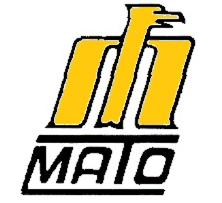Copper alloys play a pivotal role in various bearing applications, functioning like a sponge embedded with robust wear-resistant materials. This unique composition corrects minor misalignments between the shaft and the journal, with embedded elements such as Tin and Nickel preventing wear.Leaded Bronze: A time-tested bearing alloy, Leaded Bronze combines lead in a Copper Tin Matrix. This alloy not only offers temporary lubrication during oiling failures but also excels in embeddability, working effectively even in the presence of minor dust. It serves as a cost-effective solution, safeguarding expensive shafts from scouring caused by abrasive materials.Tin and Copper Alloy: Widely preferred for applications demanding high compressive strength and exceptional durability, Tin and Copper alloys boast an extended lifespan. However, they necessitate a hardened shaft and meticulous lubrication, contributing to their slightly higher cost compared to other grades.Aluminum Bronze: Noteworthy for its elevated strength, Aluminum Bronze is apt for high-impact applications. However, its limitations include a lesser ability to embed dirt, requiring a clean, dust-free assembly environment. Adequate and consistent lubrication, along with usage on hardened shafts, is crucial for optimal performance.Key Requirements for Bronze Bearing Alloys:
1.Compressive Strength: Vital for withstanding loads and pressures.
2.Fatigue Resistance: Ensures prolonged durability under cyclic loading conditions.
3.Temperature Endurance: Ability to withstand a range of operating temperatures.
4.Corrosion and Seizure Resistance: Protection against environmental factors and prevention of seizing.Resistance to 5.Deformity: Maintaining shape and integrity under various stresses.
Understanding the unique properties and applications of each alloy aids in the informed selection of materials, catering to the specific demands of diverse bearing applications..
For high loading where the possibility of extrusion or other severe deformation exists the most popular choice the Phosphorus Bronze PB1. Where is the load is of impacting nature, Aluminium Bronze Grades perform well.
Bearing bronze has a great response to cyclic loading – that is, it can keep its strength in the face of many repetitive, similar forces. Materials can sometimes be weakened below their yield point, as a repeated load will cause micro (and eventually macro) fractures into the metal, lowering its overall strength. The ability to withstand these forces is described by the fatigue strength and is often much lower than the yield point; this is not the case with bearing bronze. While its yield strength is low, its fatigue strength is comparable to other bronzes, meaning that, while not especially strong, it is consistent. This makes bearing bronzes good for parts that must last and retain their working characteristics.
Virtually all copper alloys have good corrosion resistance. When this characteristic is combined with other properties such as strength, conductivity, machinability etc. they offer a highly useful group of material to work. For Underground water or gas service all of Tin bronze, Leaded Bronzes and Silicon bronze are acceptable. In many instances, they are the only alloy specified for water or gas systems, since they offer good operating characteristics indefinitely in service. Tin bronzes have long been a standard alloy for use in sea water. They are used in equipment such as heat exchanger, marine hardware etc. Manganese or Aluminum bronze is used extensively for ship propellers of all sizes. The large size can weigh over 30 Tons.
Lubrication is important for long life of sliding bearings. There are various types of groove options we have.In some applications you want the groove to be away from sides to avoid loss of lubricant. In other applications you may want to let the oil enter from sides. So the grooves will be made exposed to sides.
Bronze bearings need some sort of lubricant to reduce friction in virtually every application. While oil is sometimes used, most applications call for grease. Either way, this substance not only requires regular maintenance and cleaning but can be a magnet for contaminants like dust and particulate matter, negatively affecting machine lifespan. While some bronze bearings are impregnated with oil to generate some “self-lubricating” properties, these designs don’t change the need for cleaning. With these drawbacks in mind, more and more businesses are using alternative materials.
created with
Website Builder Software .